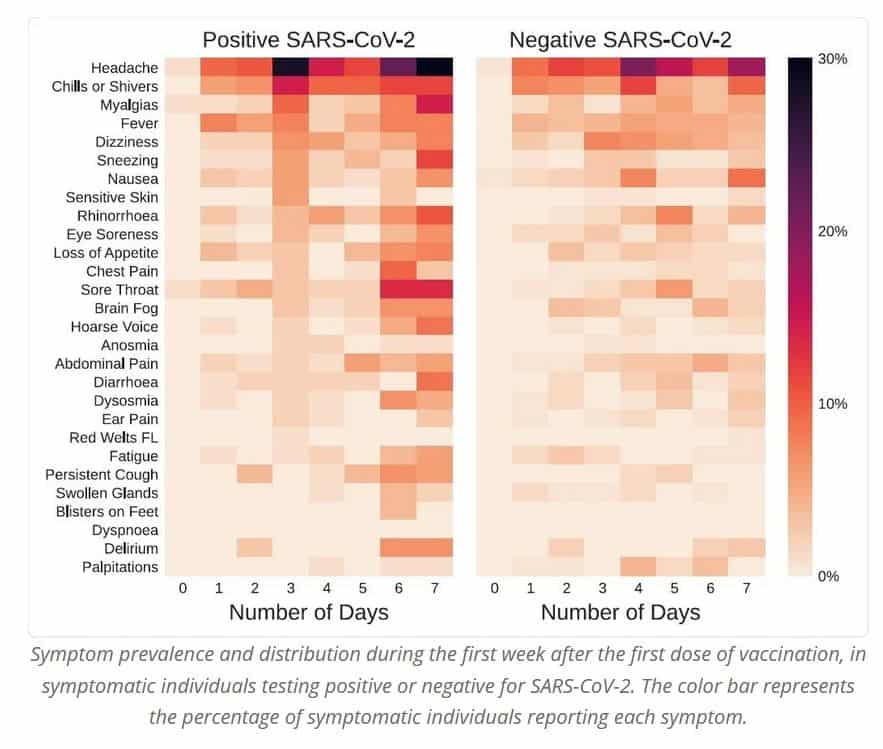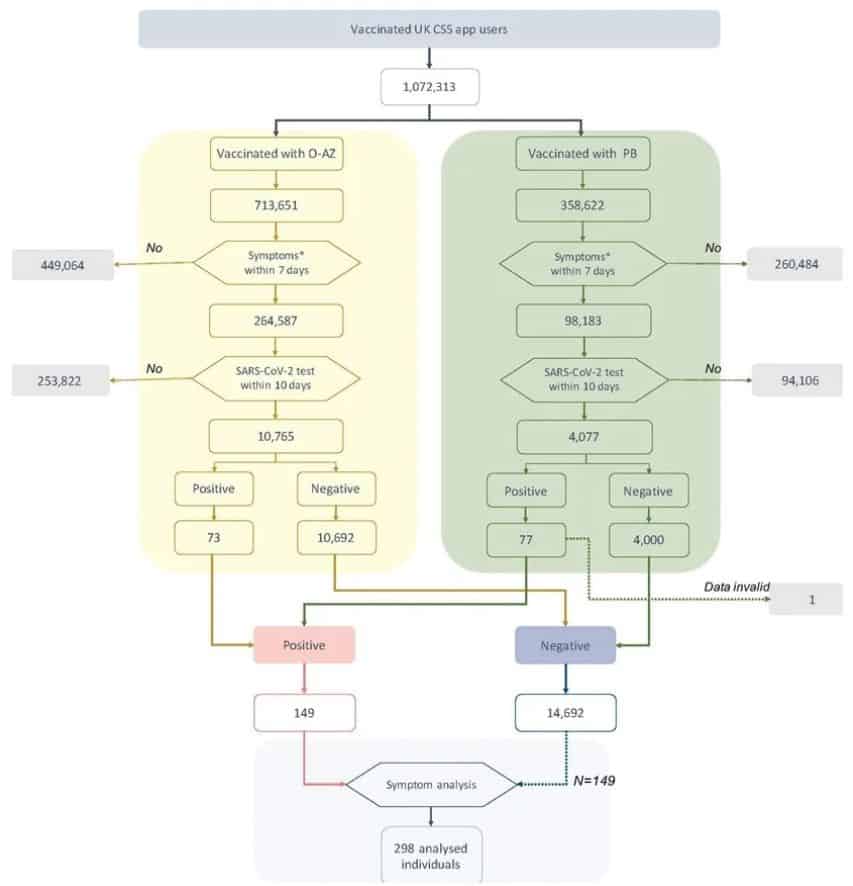This recently released research, which was posted on the preprint website medRxiv, was conducted to analyse the different reported side effects of vaccinations vs. early warning signs of COVID-19.
The researchers studied four different vaccines, all of which involved messenger ribonrome nucleic acid molecules, which are known as mRNA. The most studied was the Pfizer-BioNTech (PB) mRNA (BNT162b2) vaccine, which was based on messenger ribonucleic acid molecules that encode the viral spike protein.
- Does This Mean We Stopped Being Animal and Started Being Human Due to ‘Copy Paste’ Errors?
- The One Lifestyle Choice That Could Reduce Your Heart Disease Risk By More Than 22%
- Aging: This Is What Happens Inside Your Body Right After Exercise
- Immune-Boosting Drink that Mimics Fasting to Reduce Fat – Scientists ‘Were Surprised’ By New Findings
- Gun Violence in America: What They Don’t Talk About at the Debate
They also studied the Moderna mRNA (mRNA-1273) vaccine; the Oxford-AstraZeneca (O-AZ) adenovirus-vectored vaccine; and the Janssen adenovirus-vectored Ad26.COV2.S.
In this article, researchers tried to distinguish individuals who have breakthrough infections as well as systemic side effects of vaccination.
Results of the study
The researchers discovered that one in every three UK CSS app users who had received either the O-AZ or PB vaccination had one or more symptoms shortly thereafter. In 4% of them, the SARS-CoV-2 test was performed, with 1 percent (n=150) ultimately being verified as infected.

This represented 0.7 percent and 1.9 percent of the tested groups, respectively, who had received the O-AZ and PB vaccinations.
A quarter of the 15,000 people who were tested have CLI, with fewer than 2% of them being positive. In contrast, 0.8 percent of the more than 11,000 people who had no symptoms of CLI tested positive, suggesting that these symptoms are associated with a greater chance of test positivity. In absolute terms, however, the reverse is true, since the use of symptoms alone missed 88 of 150 test positives.
Regardless of test positive, certain symptoms including headache and muscular discomfort were more common with time. However, only those who tested positive had more sneezing and hoarseness. The test negatives, on the other hand, had a rise in fever and sore throat.
Alterations in scent and delirium had the longest duration of symptoms in the latter group. However, there was no formal difference in length between positive and negative people.

What are the consequences?
The goal of the research was to create a process for sorting symptoms in order to forecast infection risk in symptomatic patients in the early post-vaccination period. This may assist focus testing toward the high-risk group, allowing low- and middle-income nations to save money.
The researchers acknowledged that they couldn’t tell the difference between symptoms caused by the vaccine and those caused by a secondary SARS-CoV-2 infection.
There was apparently little testing among symptomatic vaccination recipients, according to the study. Only 40% of people were tested for CLI, even though their symptoms met the criteria. It’s unknown why there is such a low percentage of testing despite easily accessible facilities in the UK.
Similarly, only 40% of the 150 individuals who had a positive test result had CLI, rest being tested for reasons other than the existence of such symptoms.
Because symptoms could not clearly distinguish test positives from negatives early in the disease, an algorithm to identify individuals who should be tested and isolated could not be created.
Although the research criteria guaranteed that only recent infections were included, the timing of infection in these patients is unclear. However, since many illnesses are asymptomatic, the infection may have happened prior to vaccination — and in this instance, the research required that all vaccine recipients be asymptomatic.
However, compared to unvaccinated people, the severity of the disease is significantly reduced following vaccination. Finally, vaccination may have created a false feeling of security, leading to riskier conduct and a higher chance of illness. This supports the results of previous research.
- Does This Mean We Stopped Being Animal and Started Being Human Due to ‘Copy Paste’ Errors?
- The One Lifestyle Choice That Could Reduce Your Heart Disease Risk By More Than 22%
- Aging: This Is What Happens Inside Your Body Right After Exercise
- Immune-Boosting Drink that Mimics Fasting to Reduce Fat – Scientists ‘Were Surprised’ By New Findings
- Gun Violence in America: What They Don’t Talk About at the Debate
“In conclusion, post-vaccination symptoms cannot be distinguished with clinical confidence from early SARS-CoV-2 infection. Our study highlights the critical importance of testing symptomatic individuals – even if recently vaccinated – to ensure early detection of SARS-CoV-2 infection and help prevent future waves of COVID-19.”
Photo by Amanda Voisard/for The Washington Post via Getty Images
